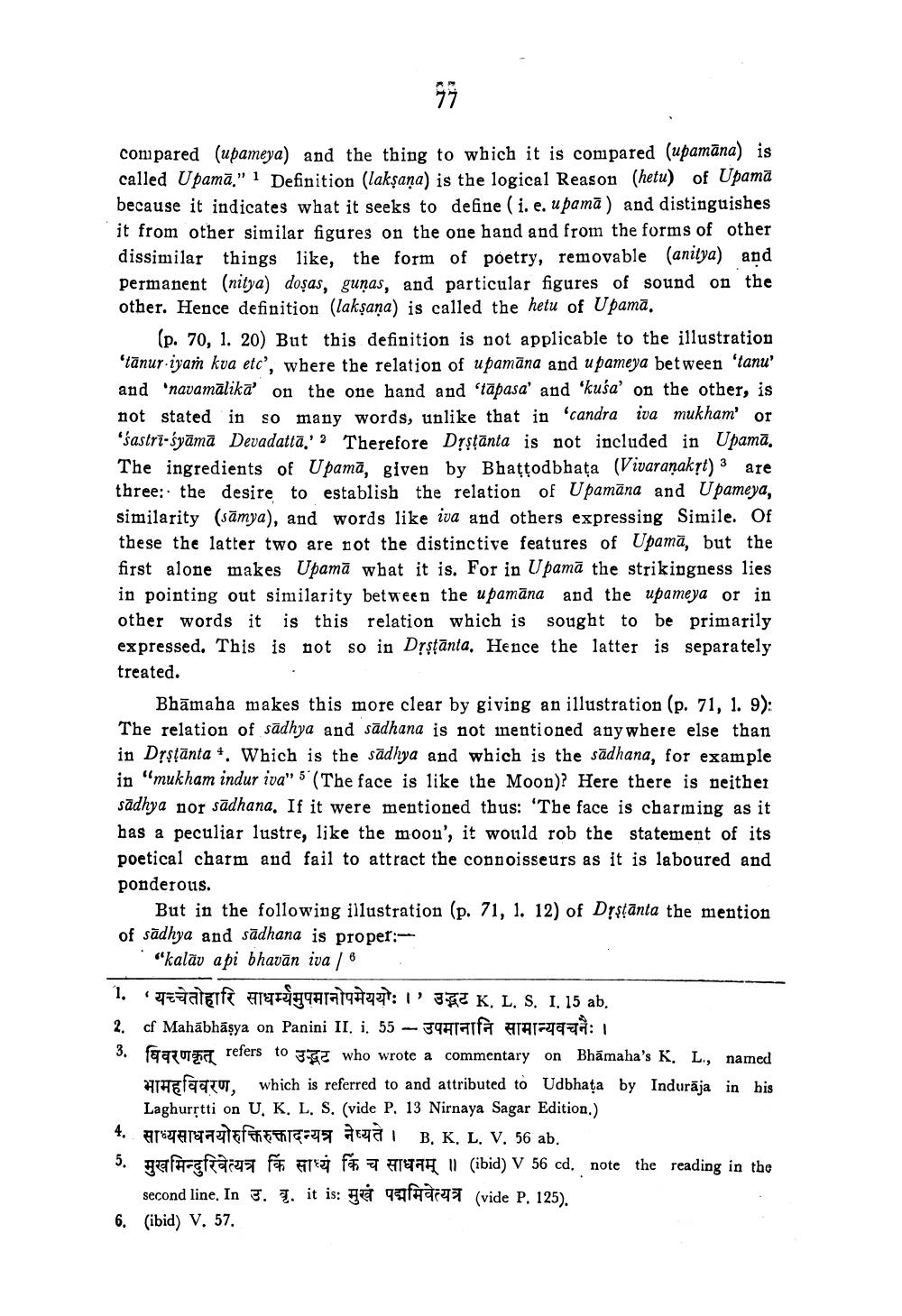________________ compared (upameya) and the thing to which it is compared (upamana) is called Upama." 1 Definition (laksana) is the logical Reason (hetu) of Upama because it indicates what it seeks to define (i. e. upama) and distinguishes it from other similar figures on the one hand and from the forms of other dissimilar things like, the form of poetry, removable (anitya) and permanent (nitya) dosas, gunas, and particular figures of sound on the other. Hence definition (laksana) is called the hetu of Upama. (p. 70, 1. 20) But this definition is not applicable to the illustration 'lanur iyar kva etc, where the relation of upamana and u pameya between 'tanu' and 'navamalika' on the one hand and 'tapasa' and 'kusa' on the other, is not stated in so many words, unlike that in candra iva mukham' or "sastri-syama Devadatta.'Therefore Dsstanta is not included in Upama. The ingredients of Upama, given by Bhattodbhata (Vivaranakyt) 3 are three: the desire to establish the relation of Upamana and Upameya, similarity (samya), and words like iva and others expressing Simile. Of these the latter two are not the distinctive features of Upama, but the first alone makes Upama what it is. For in Upama the strikingness lies in pointing out similarity between the upamana and the upameya or in other words it is this relation which is sought to be primarily expressed. This is not so in Drstanta. Hence the latter is separately treated. Bhamaha makes this more clear by giving an illustration (p. 71, 1. 9): The relation of sadhya and sadhana is not mentioned anywhere else than in Drstanta 4. Which is the sadhya and which is the sadhana, for example in "mukham indur iva" 5' (The face is like the Moon)? Here there is neither sadhya nor sadhana, If it were mentioned thus: 'The face is charming as it has a peculiar lustre, like the moon', it would rob the statement of its poetical charm and fail to attract the connoisseurs as it is laboured and ponderous. But in the following illustration (p. 71, 1. 12) of Drstanta the mention of sadhya and sadhana is proper: "kalav a pi bhavan iva / 6 1. traatgife atyr4qqaralgaa: 1deg 35EUR K. L. S. I. 15 ab. 2. cf Mahabhasya on Panini II. i. 55 - JATI ATASaga: 3. Tauh refers to 35 who wrote a commentary on Bhamaha's K, L, named H &faat, which is referred to and attributed to Udbhata by Induraja in his Laghurrtti on U, K, L, S. (vide P. 13 Nirnaya Sagar Edition) 4. Arargata FETTE=45 Jai B, K, L, V. 56 ab. 5. galigtasan For Free FF ET ATHAH II (ibid) V 56 cd. note the reading in the second line. In 5. I. it is: qe qafarga (vide P. 125). 6. (ibid) V. 57.




